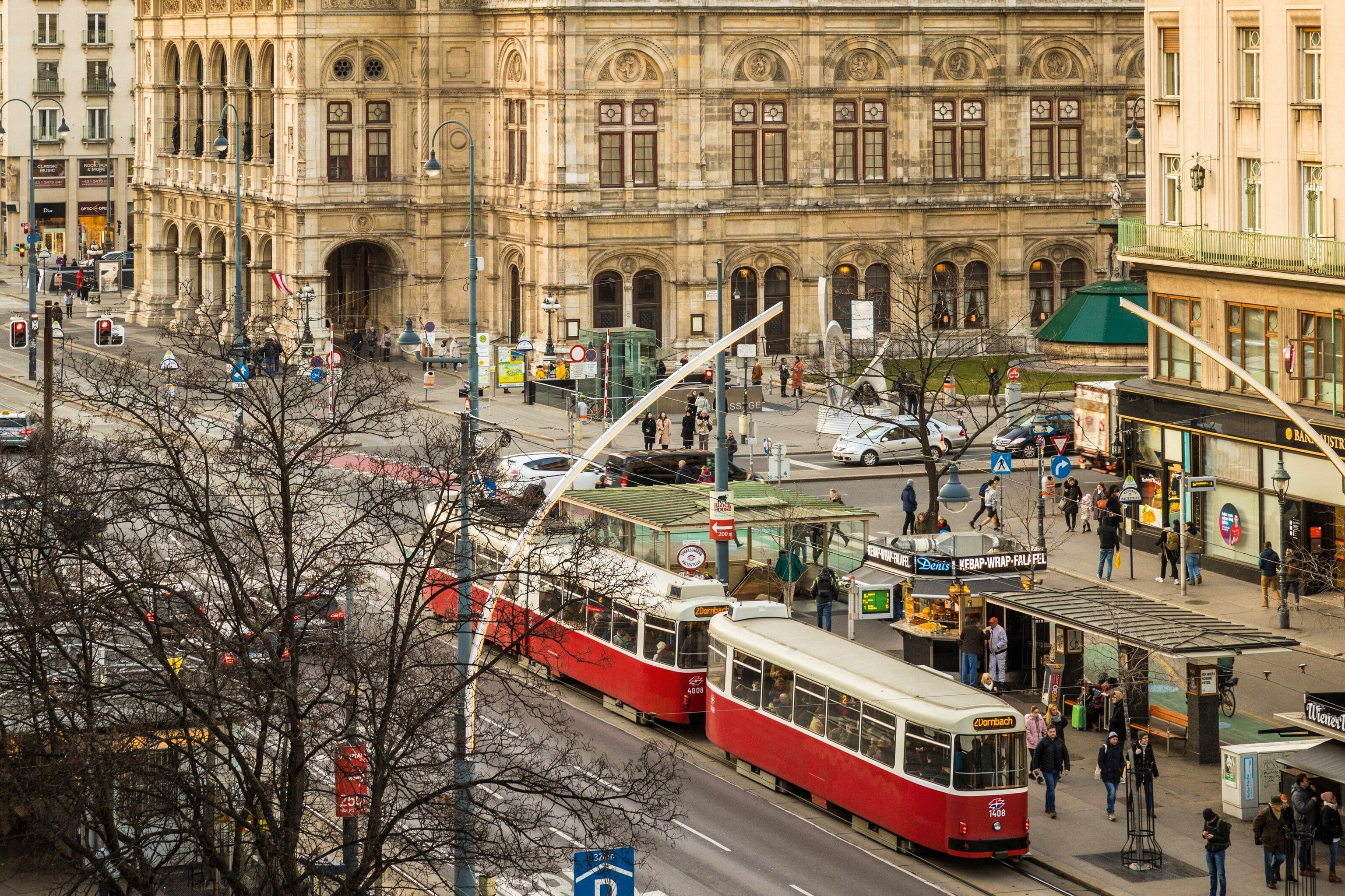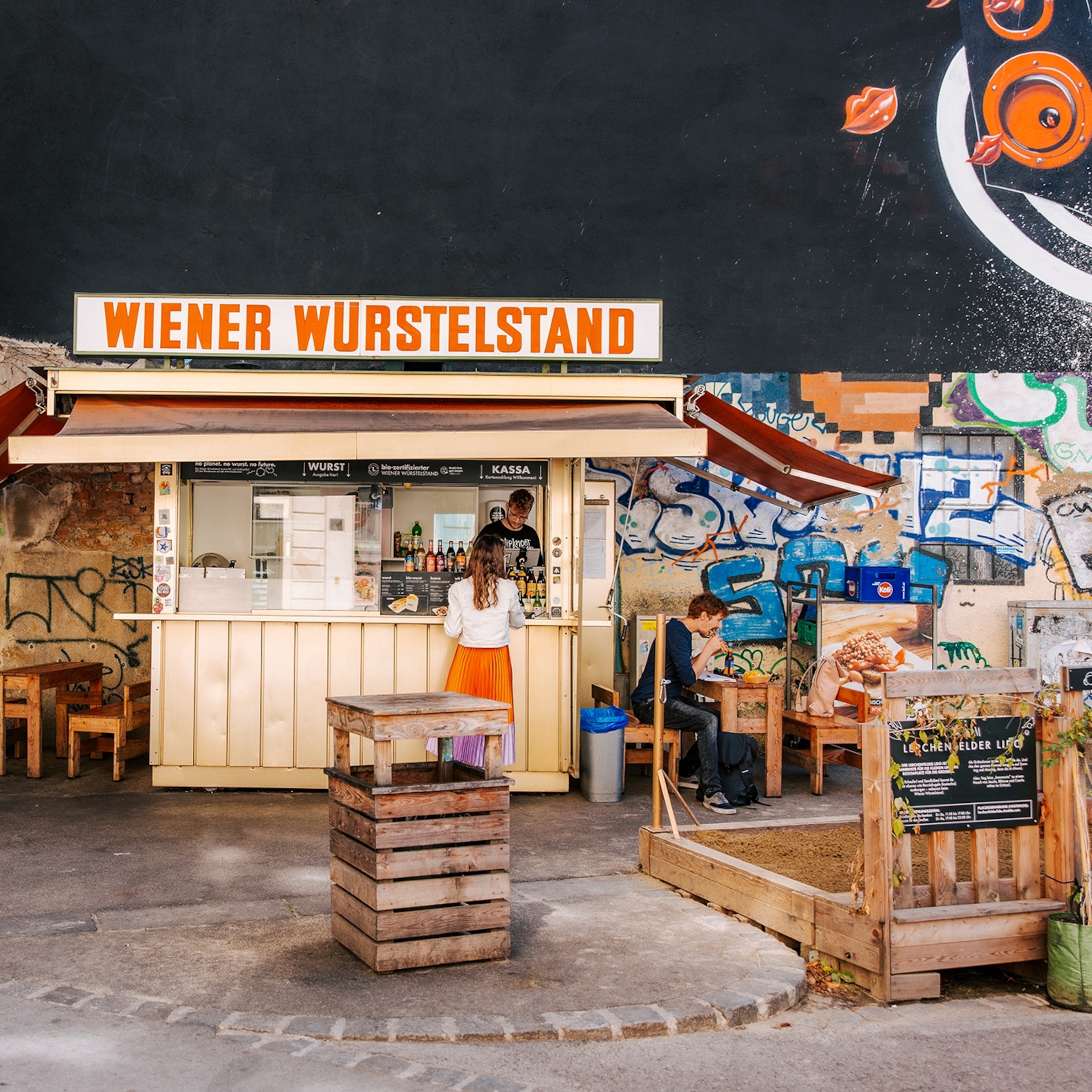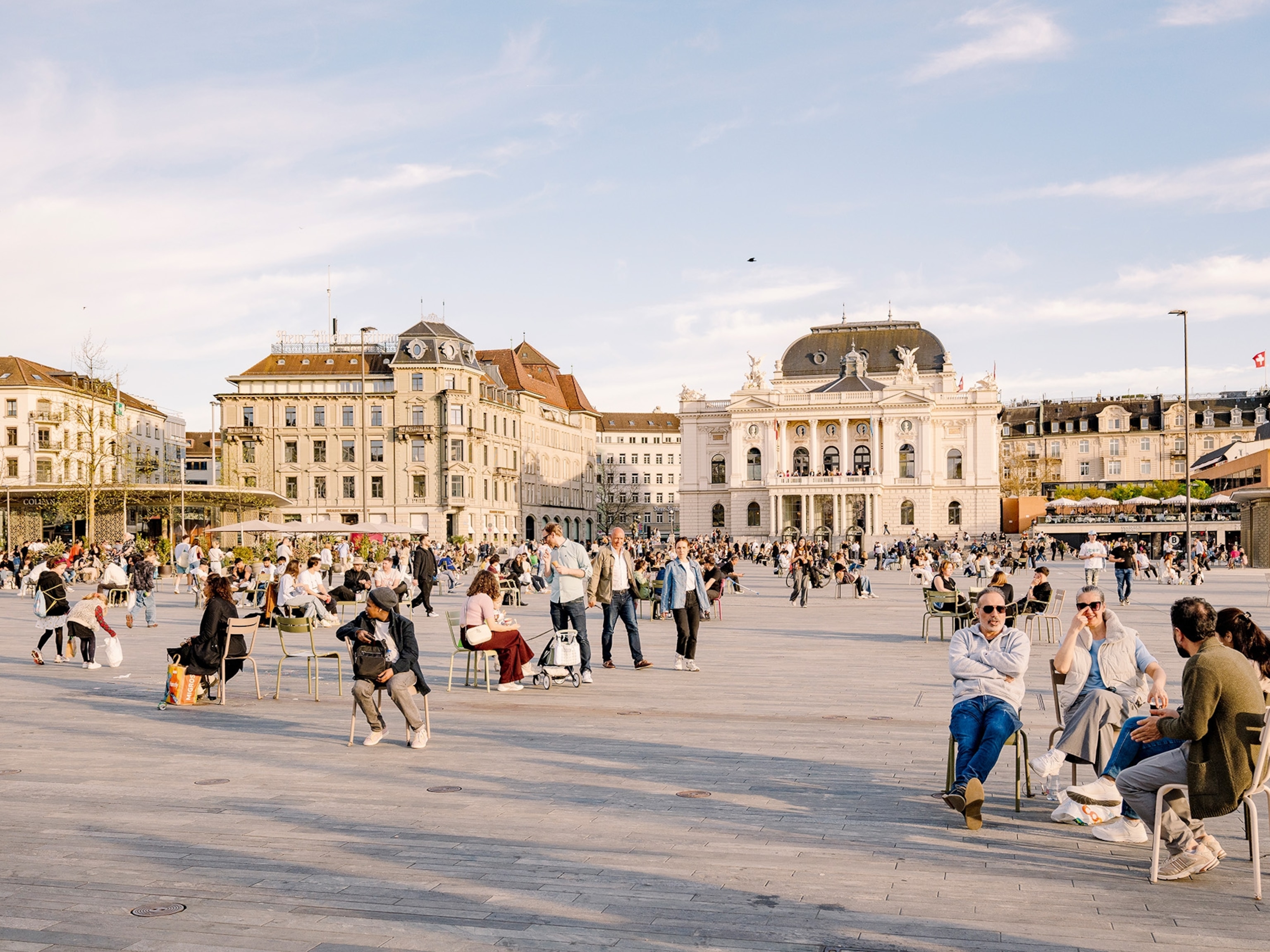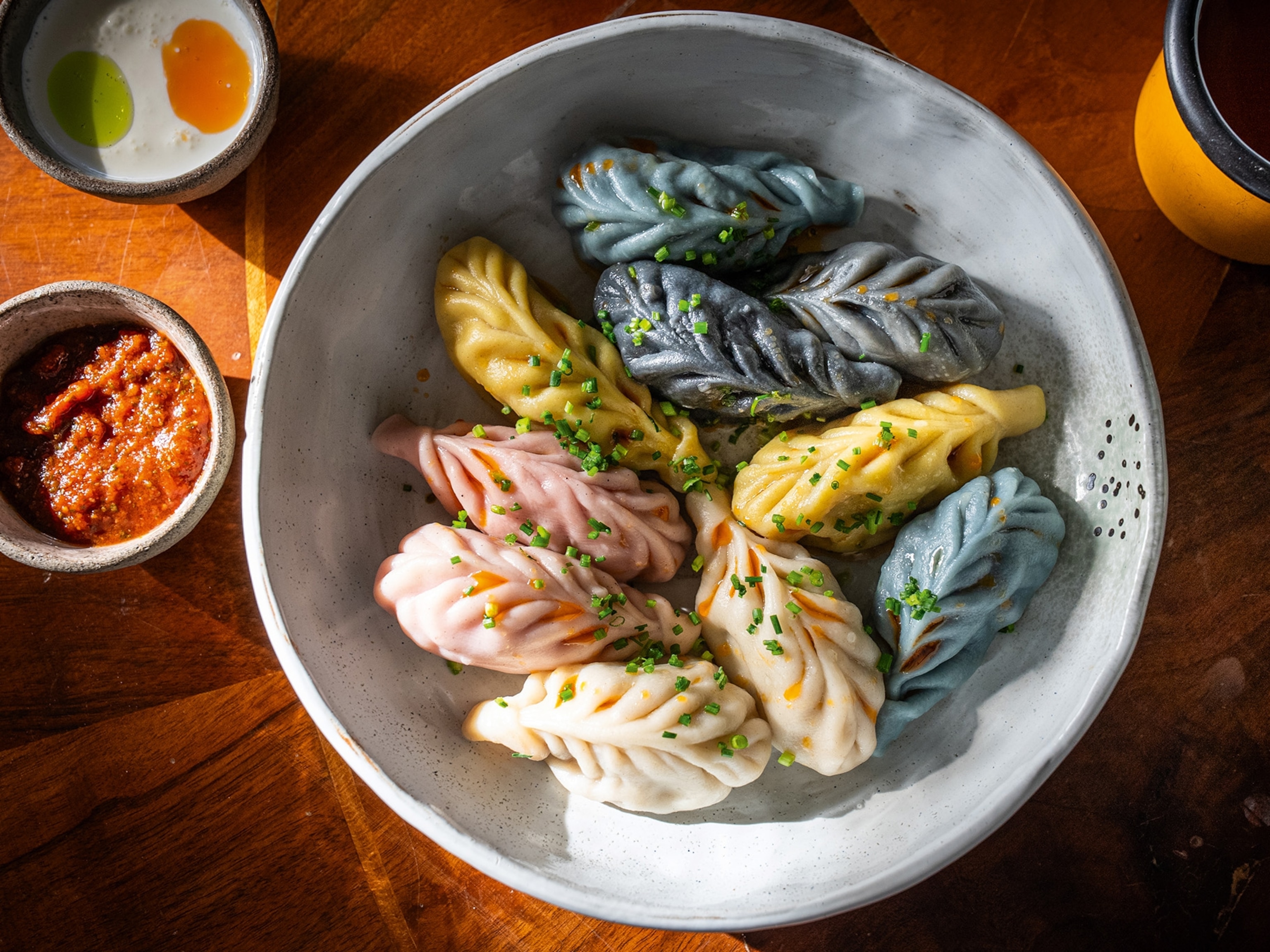
Searching for the best sachertorte in Vienna
The Austrian capital's beloved and beautiful chocolate cake is served in cafes all across the city, and even sparked a lengthy legal battle.
Not one crumb is out of place on Café Sacher’s sachertorte. A slick of smooth apricot jam is sandwiched between two layers of neat chocolate sponge, the whole thing cloaked in a precisely 4mm-thick layer of chocolate glaze before it’s cut into perfectly neat wedges. And it ought to be perfect; this is, after all, a cake so precious to Viennese culinary culture that for years it was at the heart of a legal battle.
Dating back to 1832, the recipe was created when a 16-year-old court kitchen apprentice named Franz Sacher found himself having to create a dessert fit for royalty. Prince Klemens Wenzel von Metternich had requested an impressive finish to a meal for his esteemed guests, and with a poorly head chef, the task fell to young Franz. It’s said that Prince Metternich expressed hope he wouldn’t be ‘disgraced’ by dessert and he wasn’t.
The cake was a hit, and it soon garnered fans beyond the royal court. Nearly two centuries later, I’m sitting on a red-trimmed banquette at Café Sacher — a quintessentially grand Viennese coffeehouse, within Hotel Sacher. I sip a coffee, taking in the crystal chandeliers, high ceilings and gold accents while I wait for my slice of ‘original sachertorte’ — a name backed by both legend and law.
Franz Sacher may have created this dessert, but his son, Eduard, honed the recipe during an apprenticeship at Vienna’s Demel confectionery. After Eduard opened Hotel Sacher in 1876 with sachertorte on the menu, the cake’s popularity soared. Over the decades that followed, however, the question of which establishment — Demel or Hotel Sacher — could lay claim to the ‘original’ version turned into a long, drawn-out legal battle, ending in an out-of-court settlement in 1963. “It was a good day for Hotel Sacher,” Mattias Winkler, CEO of Sacher Hotels and head of the sachertorte baking facility, tells me. “There are probably millions of different Sacher cakes on this planet, but there’s only one original.”
Demel, meanwhile, is permitted to market its version as the ‘Eduard Sacher Torte’. A precision-cut piece of cake is placed in front of me and I hear a neighbouring diner squeal, “Oh, it’s so good!” as she tucks into her own slice. I pick up my fork and break the silky surface, and for this first bite I forgot the unsweetened whipped cream that accompanies any classically prepared sachertorte. The sponge is yielding and moist; there’s a subtle note of apricot and a rich chocolate flavour. With such controversy surrounding it, it seems only fair to try the sachertorte at Demel, too, a short, scenic stroll from Hotel Sacher that takes me past the Spanish Riding School and the 14th-century Augustinian Church.
Grey skies haven’t deterred the crowds — there’s a lengthy queue, but my waiting time is blessedly brief, thanks to my willingness to sit outside. Through the windows, I can see the warm glow of Demel’s many globe-like lamps, suspended from ornate ceilings. Sitting inside offers better views of the display cabinets lined with beautifully precise desserts — but for that privilege you have to queue.

Swathed in the scent of sausages and pancakes and sheltered by an awning, I dig into a slice of sachertorte. The sponge is drier, a fact perhaps more noticeable because — unlike the Café Sacher version, which has apricot jam between sponge layers — Demel’s only has a jam below the glaze. The jam itself is also slightly sweeter, offsetting the distinct, but not unpleasant, bitterness of the chocolate.
That’s the thing about this cake. There are countless variations, and which one is ‘best’ is a matter of personal preference — but Café Sacher has to stick to the tried-and tested formula. “The moment we change anything with the recipe, we lose our ability to say we have the original sachertorte,” Mattias tells me. “We may be taking steps to modernise certain things around the hotel, but a few things will not be changed — one of these is the recipe for the cake.”
Not all Viennese bakers are so bound by tradition, however. Sachertorte can be found everywhere, from tiny snack kiosks to centuries-old cafes, and while most take a fairly classic approach, some are pushing boundaries. Gabriele Danek, of Simply Raw Bakery, is among them. Her sachertorte is raw, vegan and gluten-free. “If you run a confectionery in Vienna, the sachertorte is, of course, part of that,” she tells me after I happen upon her small shop on Drahtgasse. “I love to turn traditional recipes into nutritious, plant-based variations.” There’s a chandelier overhead, but with its patterned floor tiles, greenery and vintage-style furniture, Simply Raw has none of the formality of Demel and Café Sacher.
It’s an environment that suits Gabriele’s modern interpretation of the sachertorte, which begins with a base of walnuts, oat flour and dates, before the necessary apricot jam and chocolate glaze are introduced. The result is visually recognisable as a sachertorte, and contains the familiar flavours, but with a pleasantly chewy texture; it’s wholesome, but doesn’t feel like a wilfully healthy substitute.
As my cafe crawl continues, I wonder if this cake is eaten often by people who actually live in Vienna, or whether it’s more of a ‘thing’ among tourists. “If you live here, you don’t queue in the rain to eat sachertorte, but it’s part of Vienna for sure,” says Caroline Rötzer, an apprentice at Hotel Sacher. “You can taste the history when you eat it — it’s just a special feeling.”
How to do it
To travel by rail from London St Pancras, take the Eurostar to Brussels, then a Nightjet sleeper onwards to Vienna. Airlines including Ryanair, Wizz Air and Austrian serve Vienna from various UK airports. Hotel Sacher offers doubles from €500 (£440), room only.

Café Sacher’s sachertorte
The recipe for Café Sacher’s original sachertorte remains a closely guarded secret, but the chefs are willing to share this close approximation, featuring the classic flavours and textures. You’ll need a 24cm springform tin and a palette knife.
Serves: 16
Takes: 1 hr 20 mins, plus 3-4 hours cooling and setting.
Ingredients
280g dark couverture chocolate (minimum 55% cocoa content)
1 Vanilla pod
150g butter, softened, plus extra for the tin
100g icing sugar
6 medium eggs, yolks and whites separated
300g caster sugar
140g plain flour, plus extra for the tin
200g apricot jam
unsweetened whipped cream, to serve
Method
1. Heat oven to 170C, 150C fan, gas 3. Line the base of a 24cm springform tin with a circle of baking paper, grease the sides with butter and dust with a little flour.
2. Create a bain-marie by placing a heatproof bowl over a saucepan around a quarter full of simmering water, making sure the bowl doesn't touch the water. Melt 130g of the chocolate in the bowl. Turn off the heat and allow to cool slightly.
3. Slit the vanilla pod lengthwise and scrape out the seeds. Add the softened butter, icing sugar and vanilla seeds to a large bowl and mix using a hand whisk until fluffy. Whisk in the egg yolks one by one, then gradually mix in the melted chocolate.
4. In a separate bowl, whisk the egg whites with 100g of the caster sugar until you get stiff peaks (use an electric whisk if you have one). Spoon this on top of the butter and chocolate mixture, sift over the flour, then gently fold everything together.
5. Transfer to the tin and smooth over the top. Bake in the center of the oven for 10-15 mins, leaving the door ajar by a finger's width. Then close the oven and bake for a further 50 mins. Remove from the oven; the cake should still yield slightly to the touch.
6. Line a cooling rack with baking paper. Loosen the sides of the springform tin, then carefully slide the cake off the base of the tin onto a rack, and leave to cool completely.
7. Once cool, slice the cake in half horizontally. Add the jam to a small saucepan and place over a low-medium heat. Gently warm it through, stirring until smooth. Brush the inside of each cake half with jam, sandwich together, then brush sides.
8. To make the glaze, coarsely chop the remaining 150g chocolate and set aside. Put the remaining 200g caster sugar into a saucepan with 125ml water and set over a high heat. Boil for about 5 mins, until you have a syrup. Remove from the heat, pour the syrup into a bowl and leave to cool a little. If it's too hot for the next step, it will end up dull rather than glossy.
9. Gradually add the chocolate pieces to the syrup, stirring until thick and smooth. To test the glaze, let a little run over a wooden spoon. It's perfect when it leaves a layer 4mm thick. If the glaze is too thick, loosen any remaining sugar in the saucepan with a little hot water, then add a few drops of this to your glaze to dilute it.
10. Immediately pour the glaze over the cake and spread quickly using a palette knife. Leave to set at room temperature for a few hours, then serve with whipped cream.
Published in Issue 18 (winter 2022/23) of Food by National Geographic Traveller (UK)
Follow us on social media
Twitter | Facebook | Instagram







